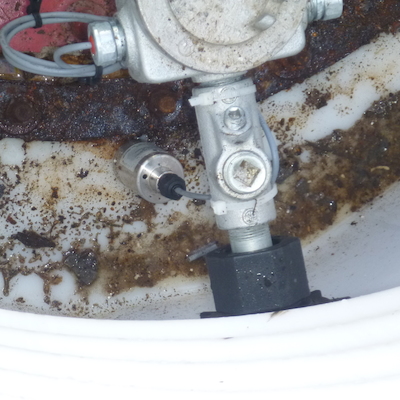Liquid Sensor Guide
All new tank and piping installations or upgrades of 10 feet or more require secondary containment. These containment systems are designed to capture any spilled or leaked product from the piping. If it is working properly, leaks from the primary layer of product pipe will be contained within the secondary layer and collect in an area that is monitored visually once a month or continuously with a liquid sensor.
Liquid sensors must be properly placed in order to get accurate reads and function as designed. The sensor should be installed in every sump and located at the lowest point in the sump or within the bottom two inches. In addition, the sensor should also be anchored securely and placed in the area closest to the piping or wherever product is most likely to collect within the sump.

Though not very pretty to look at, the sensor in this containment area has been installed correctly.
When programmed into the tank monitor, the sensors can be set to turn the fueling system off completely if it goes in to alarm. This is known as a positive shutdown. Sensors can also be programmed to trigger an alarm only, but someone must be available to respond immediately.
Sites with liquid sensors are required to document that they are monitoring and maintaining the secondary containment systems properly. Operators should have twelve months worth of records available for review. Sensor status reports or manual logs are acceptable forms of record keeping.

